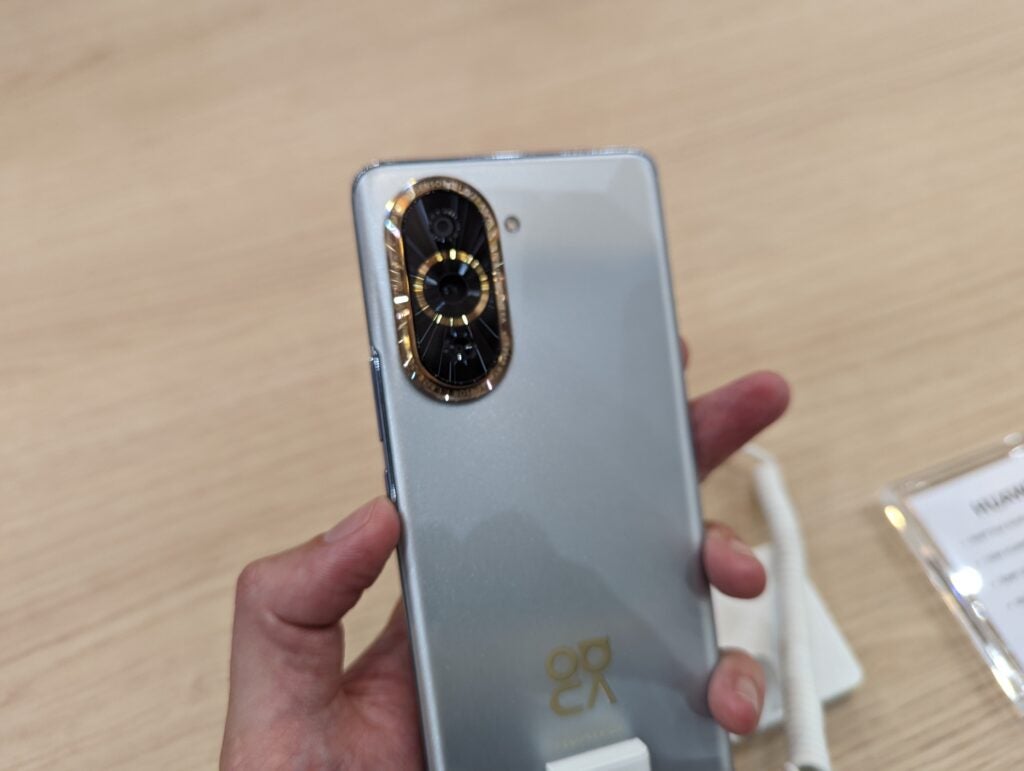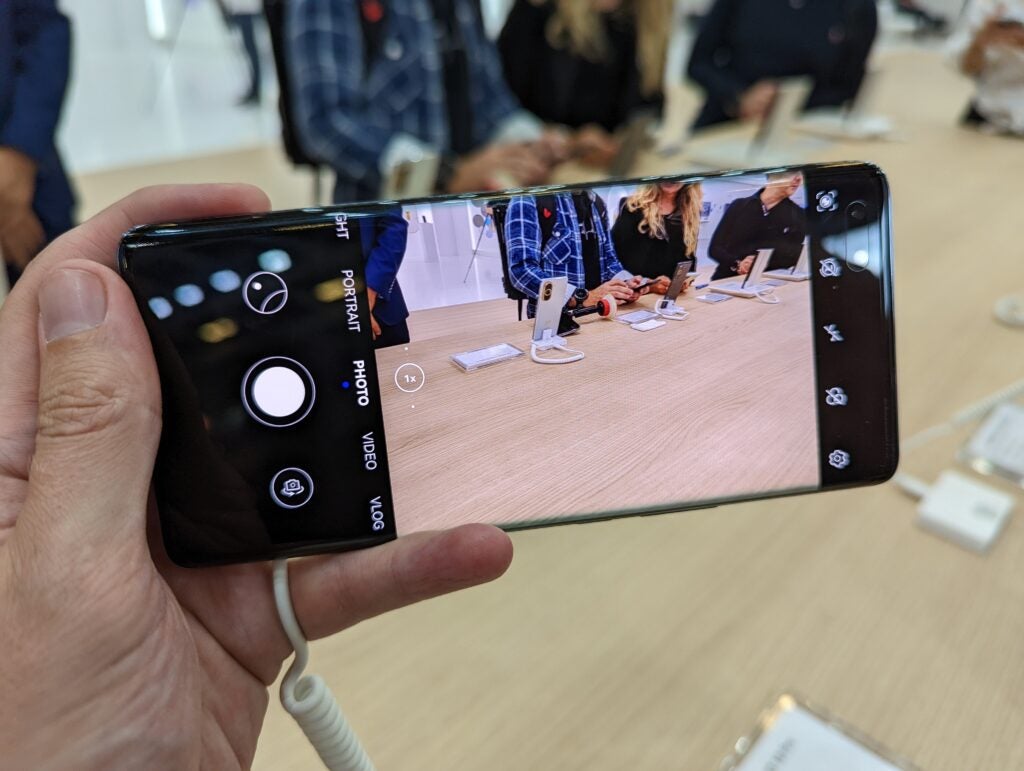The Huawei Nova 10 Pro is a new mid range smartphone from Huawei with one overt focus – taking the best selfies possible. Having had an opening to go with it, the atypical dual sensor front camera has a lot of cool features, but questions remain about its lack of 5G support and its atypical EMUI OS which has less apps than the more common Android and iOS platforms.
-
EMUI 12 softwareThe phone runs a customised version of open source Android that doesn’t have access to common Google services like the Play Store. This is replaced with Huawei’s own App Gallery. -
Dual sensor front cameraCombines 60MP main with 8MP zoom -
Huawei SuperCharge The phone can charge at up to 100W
Introduction
The Huawei Nova 10 Pro is a handset created with one singular purpose: to let people take the best selfies and vlogging posts possible.
To help it achieve this goal it comes loaded with a number of key features. Highlights include a custom dual-sensor front camera, a bespoke vlogging video mode and 100W Huawei SuperCharge tech that makes it possible to fully charge the device in 20 minutes.
This makes it one of the more interesting handsets to appear this year, with Huawei heavily hinting it will target the same “mid-range” market currently dominated by the Pixel 6a at the IFA trade show in Berlin.
Having had some hands-on time with the device we can confirm there are plenty of features ripe with promise that could make this the ultimate option for any budding influencer. But we still have a few questions about a couple of ongoing issues with Huawei’s latest phones, chief of which is the forced lack of 5G connectivity.

Design and display
A Huawei rep at the launch event described the Nova sitting in a distinctly different segment to the company’s photography focussed flagship P-phones, despite its atypical front sensor setup. Specifically they said the line is all about being “In-NOVA-tive and creating “chic” experiences.
Being in my 30s this means I’m likely not its target market. The design immediately screams “this is for teenagers and young adults” with it featuring a number of design flourishes. The biggest is the “Star Orbit Ring” camera housing on its back. The ring is similar to the one used on the Nova 9, but slightly wider. It’s got a garish gold and silver look that’s designed to be noticed, featuring 3D glass and etchings around its ring that aim to catch the light and people’s eye.
This is aided by silver sides that make it feel more like a fashion statement than a phone. I wouldn’t personally want to be seen with it, but given all the fuss the Nova 10 Pro’s target made about the Nothing Phone 1’s back lights, which I disliked for similar reasons, many will likely love it.

Outside of these flourishes the phone feels every bit as well made as many of the other best mid-range phones we’ve tested recently. The back offered little flex when pressed and the phone felt atypically thin and light, considering the amount of hardware loaded into it.
The hole punch dual sensor housing in the screen’s top left also looked nicely discrete and was noticeably smaller than I expected and significantly less intrusive than the large notches you see on many affordable / mid range handsets and Apple’s iPhones.
Powering up the display it also felt competitive with rival handsets I’ve used, including the Nothing Phone 1 and Pixel 6a. The phone comes loaded with a 6.78-inch OLED screen with a high refresh rate screen that can be set to run in 120Hz or 60Hz. Using it in 120Hz scrolling felt smooth and the screen was suitably responsive. The only downside is that due to the bright conditions and the short time I had with it I didn’t get time to get a proper read on its colour accuracy or see how it handled media, like games and streamed video. I’ll make sure to do this in the full review.

Specs and performance
I was also impressed with the Nova 10 Pro’s camera specs. I only had a brief time to shoot a few shots around the Huawei showroom floor so I can’t definitively say if it is best in class in the mid-range market which is full of great camera phones at the moment, chief being the Pixel 6a.
But opening the camera app I was impressed. The phone’s key selling point, the dual-front camera packs a main 60MP ultrawide sensor with autofocus, quad face detection and a 100 degree field of view. Backing this up there’s then a secondary 8MP “close up” camera. It’s called close up because it offers 2x optical and 5x digital zoom capabilities. To non techies those are specs we’d traditionally only see on a flagship phone’s main rear sensor a year or two ago.
Testing the sensors briefly I found they offer a fair amount of flexibility. As well as offering a closer view than anyone needs of my face the zoom sensor sports a few atypical features, including the ability to zoom in and out during video. There’s also a useful dual view recording mode that lets you set the screen to display and capture what two of the sensors are recording simultaneously, giving you a side by side view like the ones commonly seen in make-up or DIY tutorials on YouTube. It can be set to use any one of the camera’s front or back sensors in any combination you like.
The main 60MP sensor also seemed incredibly flexible. Shots looked clean and had a much better bokeh, where the background is slightly blurred, than expected – though again I’d need to see the images blown up on a big screen to properly comment on quality.

Flipping the phone over I was treated to a triple sensor arrangement combining a 50MP, RYYB “Ultra Vision Camera” with an 8MP Ultra wide and tertiary 2MP “portrait focus” depth sensor. Like the front camera the setup features a few custom tricks.
The best I saw was Follow Focus, which is a custom mode that lets you set the camera to automatically focus on one person when shooting video. Clicking on the person the camera would follow them blurring the background as they moved. It’s only going to be useful to wannabe influencers or fun as a gimmick, but again a clever trick from Huawei.
I didn’t get to test some of the other features, which include a Super Macro Mode that aims to let it accurately focus at distances of as little as 2cm. But my time with the Nova has left me curious to see how the camera performs against its main rival, the Pixel 6a, which remains the best camera phone for people on a budget we’ve tested this year.

Battery-wise the phone’s powered by a 4500mAh cell, which is large for a phone this size, and according to Huawei should offer 11 hours continuous web browsing off a single charge. This is par for the course, though I didn’t get to test this claim during the event due to time constraints. But what sets the battery apart is its 100W Huawei SuperCharge support. This should let it charge incredibly fast, with many phones struggling to go beyond 45W.
Outside of this things get a little more difficult. The phone’s powered by a mid-range Snapdragon 778 chip. Performance-wise I didn’t notice anything bad about this during my time with the Nova, especially if it’s priced right, but the fact the chip is 4G, not 5G, is an issue in today’s market. If you want the fastest connection speeds possible you won’t get them here. This is the issue of an ongoing US executive order against Huawei blocking it from selling 5G phones.
The second is that it runs EMUI 12 software. This is a custom version of open source Android that doesn’t have access to common Google services, like the Play Store. In the past this has been a big issue as, while Huawei’s done good work getting apps onto the platform, it’s still not as well stocked as the Google-ified version you’ll see on most phones or Apple’s iOS. I haven’t had long enough with the Nova to tell if that’s still the case, but it is a question we’d need to answer before recommending the handset when we get it in for testing.

First Impressions
The Huawei Nova 10 Pro is a fantastic looking mid-range handset full of innovative camera features that make it look like a great option for any budding influencer or blogger. But the hardware is still suffering from the fallout of a US executive order blocking it from accessing common Google services like the Play Store or offering 5G connectivity, which could hinder its chance of success in the Western market.
Huawei Nova 10 Pro specs
You can see a breakdown of the Nova 10 Pro’s specs and how they compare to rivals’ in the table below
UK RRP
USA RRP
EU RRP
CA RRP
AUD RRP
Manufacturer
Screen Size
Storage Capacity
Rear Camera
Front Camera
Video Recording
IP rating
Battery
Wirless charging
Fast Charging
Size (Dimensions)
Weight
Operating System
Release Date
First Reviewed Date
Resolution
HDR
Refresh Rate
Ports
Chipset
RAM
Colours
Stated Power
Jargon buster
mAh
An abbreviation for milliampere-hour and a way to express the capacity of batteries, especially smaller ones in phones. In most cases the higher the mAh, the longer the battery will last but this isn’t always the case.

























